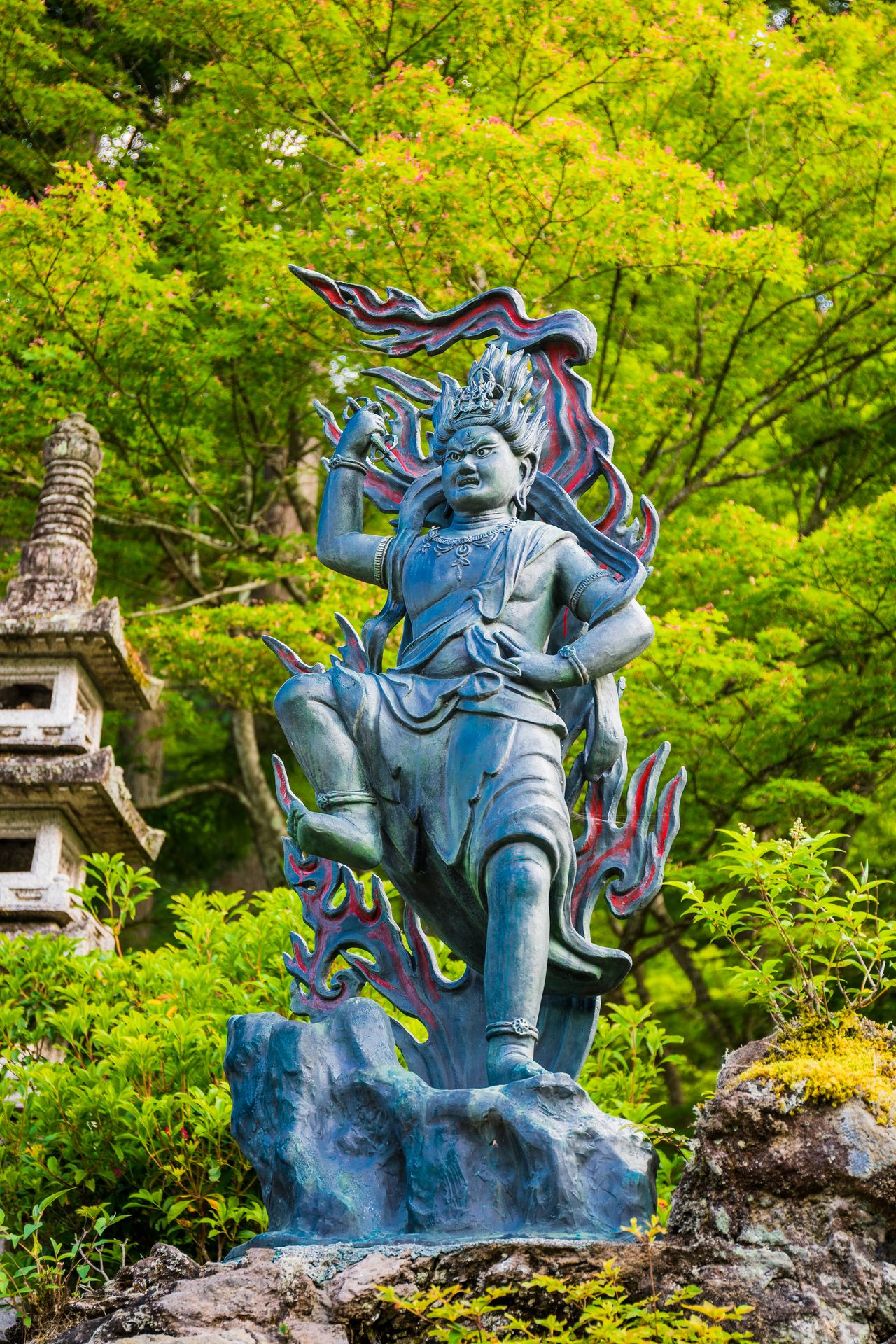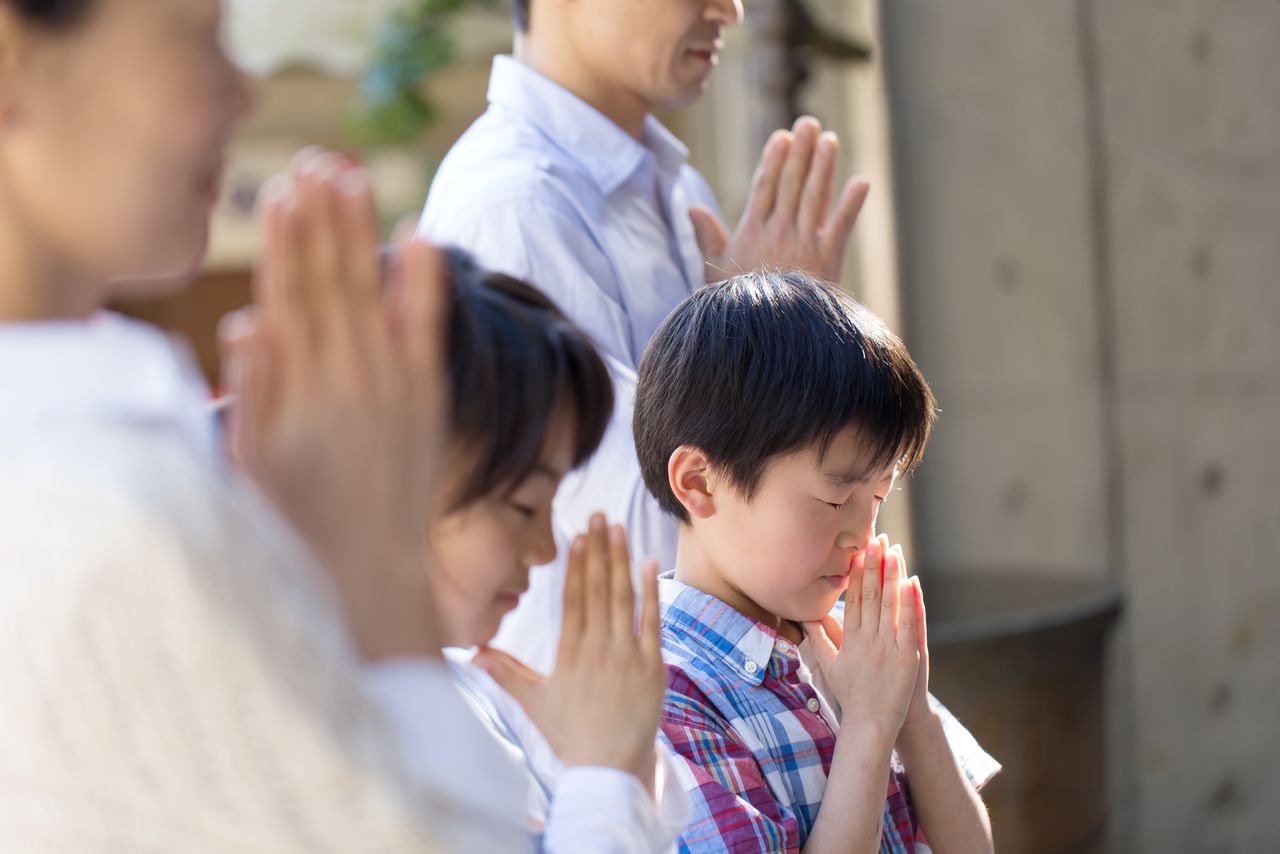
The Gods of Japanese Myths and Legends
Gods and Buddhas: “Kami” and the Changing Views of Japanese
Guide to Japan- English
- 日本語
- 简体字
- 繁體字
- Français
- Español
- العربية
- Русский
Land of Faithful?
Japanese culture has been shaped over the centuries by Shintō and Buddhist beliefs, but is modern Japan still a religious country? At first glance, the answer seems to be yes. According to a 2021 statistical study on religion conducted by the Agency for Cultural Affairs, there are around 87 million followers of Shintō, 83 million of Buddhism, 2 million of Christianity, and 7 million of various other beliefs, totaling some 180 million. But how can this be when Japan has only slightly more than 120 million inhabitants?
The devil, so to speak, is in the details. In compiling statistics on religious groups, the survey counts parishioners of Shintō shrines (ujiko) and Buddhist temples (danka) separately. But in Japan it is not unusual for a person to be listed as a parishioner at their local shrine as well as the temple where their family grave is located, producing a double count.
Seen from the outside, such religious crossover is hard to comprehend. Within Japanese culture, though, the intermingling of Shintō and Buddhist faiths dates back centuries. The most obvious manifestation of this relationship is in the observation of rites of passage. For instance, parents bring their children to Shintō shrines to pray for health and prosperity in such customs as hatsu-miyamōde (first shrine visit) for newborns and Shichi-Go-San for offspring aged three, five, and seven. At the other end of life, families turn to Buddhism when a member passes, with the religion accounting for some 90% of funeral services.
Religion and Gods
The survey gives the impression that in one form or another religion is central in the lives of Japanese. But is this actually the case? Looking at various opinion polls shows that only around a third of the population say they follow a particular faith, with the vast majority of people characterizing themselves as nonreligious.
Evidence of secular leanings among the Japanese can also be found in a series of surveys that examine college students’ attitudes toward religion. Jointly conducted by the Institute for Japanese Culture and Classics at Kokugakuin University and the Japanese Association for the Study of Religion and Culture between 1995 and 2020, the 13 surveys found that the number of students who describe themselves as religious remained consistently low, hovering around 10%. More than half of respondents, on the other hand, said that they observed hatsumōde, the first visit to a shrine or temple in the New Year. One might argue that a person entreating Shintō or Buddhist deities for good fortune in the coming year is engaged in religious behavior, but in secular Japan, there is nothing out of the ordinary about observing cultural customs like shrine visits in a wholly nonreligious context.
On the other hand, when asked in the 2020 edition of the student survey if they believed in the existence of kami, a fraught term rendered in English as “god,” 21% of respondents said yes and a further 38% answered “there might be,” indicating a strong leaning toward the belief in a divine presence in the world.
How are we to understand these conflicting findings given the self-proclaimed nonreligious stance of most Japanese? This requires taking a closer look at how people view kami.
A Blend of Gods
For much of the last millennium of Japanese history shinbutsu-shūgō, the fusion of Shintō and Buddhism, dominated religious life. It was generally accepted that native kami and Buddhas were one and the same, and the Japanese pantheon was populated by a multitude of gongen, Buddhas and bodhisattvas manifested as kami, such as the important mountain deity Zaō Gongen. Relics of this intermixing of faiths remain firmly part of the cultural fabric of modern Japan. For instance, Japanese in times of consternation and dismay might exclaim “Gods and Buddhas, save me” (kamisama hotokesama, tasukete), typically without considering the implicit religious connotations of the phrase.

The imposing figure of Zaō Gongen at the Buddhist temple Zuihōji at Kobugahara in Tochigi Prefecture. (© Pixta)
The spread of Christianity after a ban on the religion was lifted during the Meiji era (1868–1912) muddied the waters further by adding the concept of a single, supreme being to the already complicated view of kami.
As Christian missionaries began to spread their faith in East Asia in earnest, they struggled with how to express the idea of a monotheistic God in cultures that believed in a diversity of deities. A Chinese version of the Bible, the first to be published in one of the native languages of the region, adopted three variations for God: Shangdi (上帝, “lord on high”), Shen (神, “god”), and Tianzhu (天主, “heavenly master”).
Translators of the Japanese Bible faced a similar conundrum in expressing the Almighty. Taking the general populace’s unfamiliarity with Christianity into consideration, they looked to avoid the confusion of the Chinese text, settling on the familiar kami over less recognizable terms. This was far from an ideal solution, however, as it merely brought the all-powerful God of Christianity into the already multifarious realm of Japanese kami.
Meiji-era missionaries played a central role in establishing Japan’s Western-modeled education system, a legacy that can be seen in the number of leading institutions affiliated with Christian denominations, helping acclimate society to different tenets of the religion. As a faith, though, Christianity remains on the outskirts, with followers representing only around 1% of the population. At the same time, Japanese now enthusiastically celebrate Christmas and Valentine’s Day as nonreligious, commercial holidays, and some 60% of newlyweds take their vows in Christian-styled ceremonies in replica chapels complete with stand-in priests.
The repercussions of ascribing the term kami to the supreme being of Christianity have worked the other way as well by influencing traditional perceptions of Shintō gods. For instance, many newcomers to Japanese mythology are initially surprised to find that far from being exalted, native deities in myths make mistakes or fail in their divine endeavors, appearing at times more human than divine.
Since ancient times, the Japanese view of kami has evolved to reflect changes in society, a process that is still underway amid Japan’s growing medley of religious and secular cultural traditions.
(Originally published in Japanese. Banner image © Satō Tadashi.)
